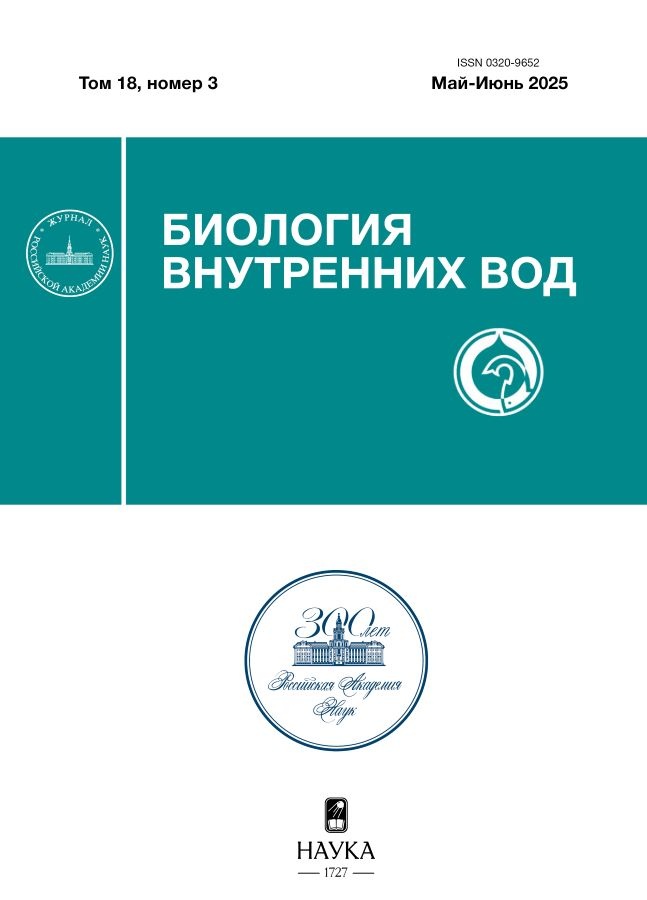First finding of antibacterial activity in cestodes
- Authors: Izvekova G.I.1, Filonchikova E.S.2, Frolova T.V.1, Plotnikov A.O.2
-
Affiliations:
- Papanin Institute for Biology of Inland Waters Russian Academy of Sciences
- Ural Branch of the Russian Academy of Sciences
- Issue: Vol 18, No 3 (2025)
- Pages: 527–531
- Section: КРАТКИЕ СООБЩЕНИЯ
- URL: https://kazanmedjournal.ru/0320-9652/article/view/686998
- DOI: https://doi.org/10.31857/S0320965225030141
- EDN: https://elibrary.ru/IZPBZY
- ID: 686998
Cite item
Abstract
The results of the study support the presence of antibacterial substances in the tissues and secretion products of cestodes Eubothrium rugosum and Triaenophorus nodulosus living in the intestines of fish. The growth of test strains Escherichia coli, Staphylococcus aureus, Shigella sonnei, Salmonella enteritidis, Micrococcus luteus, Pseudomonas aeruginosa was significantly reduced in a liquid medium containing the incubation medium of cestodes or extracts from their tissues. The study revealed a multidirectional effect of the cestode incubation medium, tegument fraction, and tissue extracts on bacterial growth, as well as features of the effect on the bacteria of different taxa. Shigella sonnei demonstrated the highest level of growth suppression due to the antibacterial effect of the incubation media and extracts from Eubothrium rugosum and Triaenophorus nodulosus tegument.
Keywords
Full Text
About the authors
G. I. Izvekova
Papanin Institute for Biology of Inland Waters Russian Academy of Sciences
Author for correspondence.
Email: izvekova@ibiw.ru
Russian Federation, Borok, Nekouzskii raion, Yaroslavl oblast
E. S. Filonchikova
Ural Branch of the Russian Academy of Sciences
Email: izvekova@ibiw.ru
Institute for Cellular and Intracellular Symbiosis
Russian Federation, OrenburgT. V. Frolova
Papanin Institute for Biology of Inland Waters Russian Academy of Sciences
Email: izvekova@ibiw.ru
Russian Federation, Borok, Nekouzskii raion, Yaroslavl oblast
A. O. Plotnikov
Ural Branch of the Russian Academy of Sciences
Email: izvekova@ibiw.ru
Institute for Cellular and Intracellular Symbiosis
Russian Federation, OrenburgReferences
- Герасимов Ю.В., Соломатин Ю.И, Базаров М.И. и др. 2024. Влияние потепления климата на популяционные показатели рыб водоемов Верхней Волги // Биология внутр. вод. № 4. С. 587. https://doi.org/10.31857/S0320965224040074
- Извекова Г.И. 2022. Паразитарные инвазии и кишечная микробиота: аспекты взаимоотношений (обзор) // Изв. РАН. Сер. биол. № 4. С. 401. https://doi.org/10.31857/S1026347022040072
- Извекова Г.И., Немцева Н.В., Плотников А.О. 2008. Таксономическая характеристика и физиологические свойства микроорганизмов из кишечника щуки (Esox lucius) // Изв. РАН. Сер. биол. № 6. С. 688.
- Плотников А.О., Корнева Ж.В., Извекова Г.И. 2010. Морфо-физиологическая характеристика бактерий, населяющих слизистую кишечника щуки (Esox lucius L.) // Биология внутр. вод № 2. С. 77.
- Соколова Т.С., Федорова О.С., Салтыкова И.В. и др. 2019. Взаимодействие гельминтов и микробиоты кишечника: значение в развитии и профилактике хронических неинфекционных заболеваний // Бюл. сибирской медицины. Т. 18. № 3. С. 214.
- Ashour D.S., Othman A.A. 2020. Parasite–bacteria interrelationship // Parasitol. Res. V. 119. P. 3145. https://doi.org/10.1007/s00436-020-06804-2
- Bruno R., Maresca M., Canaan S. et al. 2019. Worms’ antimicrobial peptides // Mar. Drugs. 17A. № 512. P. 2. https://doi.org/10.3390/md17090512
- Da Costa J.P., Cova M., Ferreira R., Vitorino R. 2015. Antimicrobial peptides: An alternative for innovative medicines? // Appl. Microbiol. Biotechnol. V. 99. P. 2023. https://doi.org/10.1007/s00253-015-6375-x
- Dalton J.P., Skelly P., Halton D.W. 2004. Role of the tegument and gut in nutrient uptake by parasitic platyhelminths // Can. J. Zool. V. 82. № 2. P. 221. https://doi.org/10.1139/z03-213
- Dezfuli B.S., Bosi G., DePasquale J.A. et al. 2016. Fish innate immunity against intestinal helminthes // Fish and Shellfish Immunol. V. 50. P. 274. https://doi.org/10.1016/j.fsi.2016.02.002
- Giacomin P., Agha Z., Loukas A. 2016. Helminths and intestinal flora team up to improve gut health // Trends in Parasitol. V. 32. P. 664. https://doi.org/10.1016/j.pt.2016.05.006
- Izvekova G.I., Frolova T.V., Izvekov E.I. et al. 2021. Localization of the proteinase inhibitor activity in the fish cestode Eubothrium rugosum // J. Fish Diseases. V. 44. P. 1951. https://doi.org/10.1111/jfd.13508.IF 2.767
- Kashinskaya E.N., Simonov E.P., Poddubnaya L.G. et al. 2023. Trophic diversification and parasitic invasion as ecological niche modulators for gut microbiota of whitefish // Front. Microbiol. V. 14. P. 1090899. https://doi.org/10.3389/fmicb.2023.1090899
- Kreisinger J., Bastien G., Hauffe H.C. et al. 2015. Interactions between multiple helminthes and the gut microbiota in wild rodents // Phil. Trans. R. Soc. B. V. 370. P. 20140295. https://doi.org/10.1098/rstb.2014.0295
- Loke P., Lim Y.A.L. 2015. Helminths and the microbiota: parts of the hygiene hypothesis // Parasite Immunol. V. 37. P. 314. https://doi.org/10.1111/pim.12193
- Midha A., Janek K., Niewienda A. et al. 2018. The intestinal roundworm Ascaris suum releases antimicrobial factors which interfere with bacterial growth and biofilm formation // Front. Cell. Infect. Microbiol. V. 8. A. P. 271. https://doi.org/10.3389/fcimb.2018.00271
- Rausch S., Midha A., Kuhring M. et al. 2018. Parasitic nematodes exert antimicrobial activity and benefit from microbiota-driven support for host immune regulation // Front. Immunol. V. 9. P. 2282. https://doi.org/10.3389/fimmu.2018.02282
- Rowland I., Gibson G., Heinken A. et al. 2018 Gut microbiota functions: metabolism of nutrients and other food components // Eur. J. Nutr. V. 57. P. 1. https://doi.org/10.1007/s00394-017-1445-8
- Tassanakajon A., Somboonwiwat K., Amparyup P. 2015. Sequence diversity and evolution of antimicrobial peptides in invertebrates // Devel. and Comp. Immunol. V. 48. P. 324. https://doi.org/10.1016/j.dci.2014.05.020
- Zaiss M.M., Harris N.L. 2016. Interactions between the intestinal microbiome and helminth parasites // Parasite Immunol. V. 38. P. 5. https://doi.org/10.1111/pim.12274
Supplementary files












